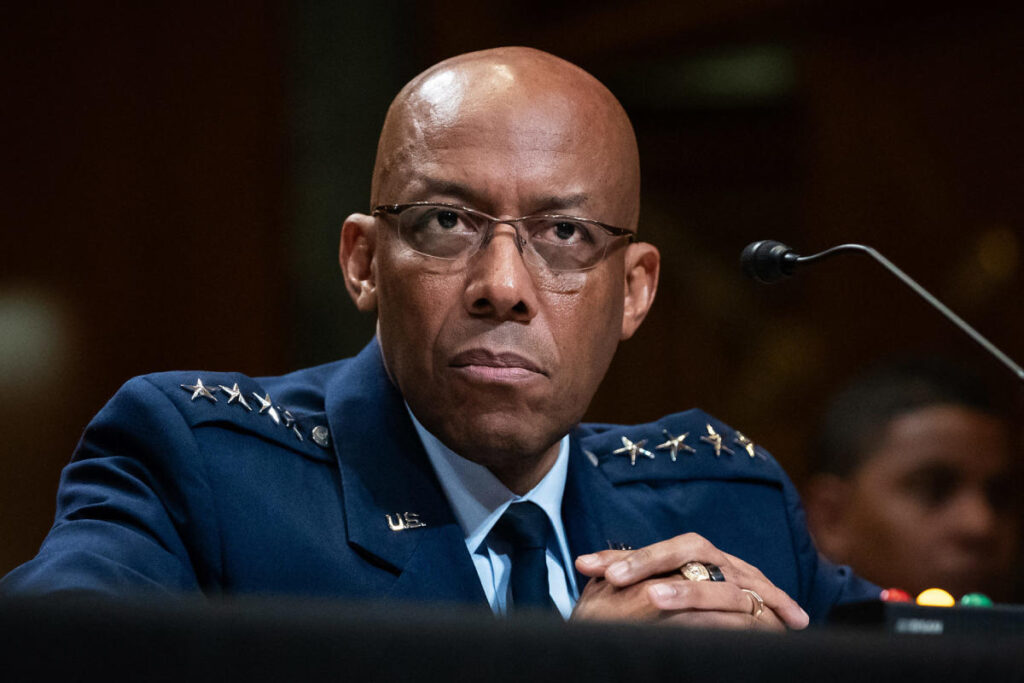The recent meeting between President-elect Donald Trump and Air Force Gen. Charles Q. Brown Jr., the chairman of the Joint Chiefs of Staff, during the Army-Navy football game has potentially altered Trump’s initial intentions to dismiss Brown. Trump and his faction have criticized military leaders for their focus on diversity initiatives, with Brown often singled out as a target. However, during their approximately 20-minute one-on-one conversation, both seemed to find common ground. Brown congratulated Trump on his election and expressed his readiness to collaborate with the president, which reportedly resonated positively with Trump. This discussion seems to have changed Trump’s stance towards Brown, making it less likely that he would be terminated from his position, at least in the immediate future.
General Brown’s position, which he assumed on October 1, 2023, is seen as one of much-needed stability within the military hierarchy, especially in light of the potential confirmation of Trump’s choice for Secretary of Defense, Pete Hegseth, who has been criticized for his lack of experience and controversial views. Some Republican lawmakers and retired military leaders have advised against firing Brown, noting that it could create instability within the ranks and undermine morale. Brown’s continuation in his role is viewed as essential to maintaining momentum and coherence, particularly during a period when Hegseth is poised to implement possibly divisive policies.
In the lead-up to the meeting, Brown had been aware of the changing dynamics surrounding his position and the push from Trump’s inner circle to remove him, largely due to his past engagement with diversity, equity, and inclusion (DEI) initiatives. This sentiment was notably expressed by Hegseth, who has openly stated a desire to replace military leaders involved in DEI efforts with a more traditional focus on warfighting. His comments reflect a broader request for a military leadership that prioritizes operational readiness over social issues, a perspective that is increasingly gaining traction among certain factions in Trump’s camp.
Interestingly, Brown’s trajectory and his recent promotion are noteworthy, as he became the first Black service chief in U.S. military history and has endeavored to address systemic challenges within the armed forces. In the aftermath of George Floyd’s death in 2020, Brown released a powerful video that conveyed his personal struggles with racial bias throughout his military career and as a father. His candid acknowledgment of the challenges faced by Black individuals in America contrasted sharply with the prevailing narratives pushed by Trump and his supporters, who have frequently criticized such discussions as divisive.
Tension has continued to build around the issue of diversity in the military, particularly following a memo co-signed by Brown in 2022 that aimed to promote recruitment goals based on race and gender. This memo sparked significant backlash from Republican lawmakers, who argued it amounted to enforcing racial quotas within the military. The heated discourse surrounding recruitment and diversity has underscored a broader cultural battle within the U.S. and emphasized the differing philosophies of military leadership between the traditional meritocratic approach and more progressive values aiming for inclusivity.
Overall, the meeting between Trump and Brown illustrates the complexities of leadership and the evolving narrative surrounding military policies under the incoming administration. Brown’s ability to navigate this treacherous political landscape, while maintaining his focus on the readiness and composure of the military, could prove crucial. Both leaders are now at a pivotal juncture, where their approaches could redefine the relationship between the military’s operational roles and the societal values influencing its leadership structure, especially in a period rife with contention over diversity and inclusion within the armed forces.

